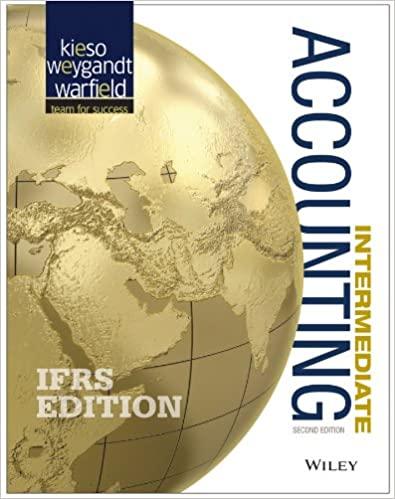Your client, Happy Days Limited (Happy Days) is a company involved in the manufacture and development of play equipment for parks, schools and other bodies
Your client, Happy Days Limited (Happy Days) is a company involved in the manufacture and development of play equipment for parks, schools and other bodies such as local authorities, councils and community groups. Happy Days was set up in Trinidad & Tobago five years ago with support from government grants for employment costs and capital equipment costs. The companys employee numbers continue to expand from a starting base of 15 employees. As external auditors to Happy Days, your firms audit approach has been to carry out an interim audit approximately ten months into the companys financial year; followed by the final audit, which generally commences six weeks after the year-end. As a newly appointed Audit Senior you have been given managerial responsibility for this assignment and are currently reviewing the audit papers which were prepared during the interim audit visit to Happy Days. You met with the Audit Manager for the interim audit and he has indicated to you that from his interim audit work on the payroll processing and accounting system, the system does not employ the full extent of controls, which are evident in other companies of similar size and complexity. He has copied for you comprehensive system notes which he prepared during the interim audit. These notes are reproduced below: Happy Days operates a number of payrolls, the largest of which is the manufacturing payroll which deals with approximately 40 employees. Manufacturing employees are paid a standard weekly wage for a 35-hour working week. However, overtime is worked by most employees and can significantly boost weekly earnings. All manufacturing employees are required to account for their time on a daily basis. This process involves employees logging time spent on particular activities into keypads located throughout the factory. Production Supervisors provide hard copy information to the Human Resources Department for those employees on leave and this is used to compare employees logged in against total manufacturing staff numbers. Any discrepancies should be followed up. However, this hasnt been done for several months due to a backlog of work in the Human Resources Department in addition to Production Supervisors not providing the hard copy reports in a timely manner. In addition, all employees complete time-sheets each week recording their standard and over-time hours. These are then forwarded to the Human Resources Department where they are manually entered into the payroll processing system. If a time-sheet is not received, the standard hours for the week are automatically generated by the system. The payroll is then run and the payslips and automatically generated cheques are produced. These are given to the Production Supervisors who hold them for collection by the individual employees. The payroll system is integrated with the nominal ledger and it generates a payroll expense split into production and non production accounts in addition to a charge in the wages liability account and the creation of liabilities for net pay, statutory and voluntary deductions. The balance on the payroll liability account is expensed quarterly. There are no hard copy reports produced by the system. The payroll programme uses both input hours and information sourced from the employees master file. The master file is updated regularly for new employees, changes to tax free allowances, new rates of pay, changes in voluntary deductions, etc. Changes are accumulated each week and processed by payroll department staff. Changes are stamped within the system and flagged with the Human Resources Department User I.D. and password which are common to all payroll staff. Changes are investigated if there are employee queries. A separate payroll bank account is maintained and is funded by weekly transfers equal to total gross pay. All payroll related payments are made from this account. Any balances outstanding on the various deduction accounts are written off as part of the process for preparing annual accounts each year. Any balance on the wages bank account is transferred back to the main bank account.
Required: (a) You are the Audit Senior for this audit and have been asked to prepare a report for the Audit Manager on the basis of the systems notes reproduced above. In your report, identify SEVEN (7) aspects of Happy Days system for processing and accounting for payroll, which you believe to be indicative of control weaknesses and provide suitable recommendations for improvement.
(b) Happy Days Ltd. maintains a separate bank account for its payroll expense. Identify and explain SIX (6) benefits that may be derived from using such a system?
(c) ISA 500 Audit Evidence requires auditors to obtain sufficient and appropriate audit evidence. Appropriateness is a measure of the quality of audit evidence; that is, its relevance and its reliability. Required: Identify and explain FOUR factors which influence the reliability of audit evidence.
(d) A member of your audit team has asked for information on ISA 701 Communicating Key Audit Matters in the Independent Auditors Report as she has heard this standard is applicable to listed clients such as Happy Days. Required: Identify what a key audit matter (KAM) is and explain how the auditor determines and communicates KAM.
Step by Step Solution
There are 3 Steps involved in it
Step: 1

See step-by-step solutions with expert insights and AI powered tools for academic success
Step: 2

Step: 3

Ace Your Homework with AI
Get the answers you need in no time with our AI-driven, step-by-step assistance
Get Started


